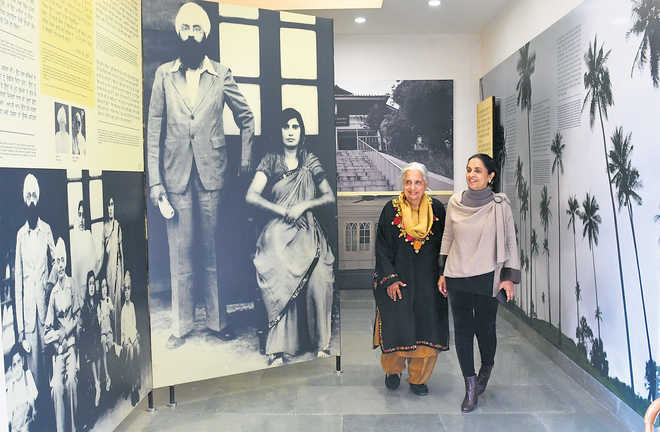Sanjam Preet Singh in Chandigarh
Dr Diwan Singh Kalepani? Maybe, a student of history would have read about him. Dr Diwan Singh is among several unsung heroes of the freedom struggle. He was a doctor in the Indian Army. During his posting in Dagshai, he gave the call for ‘swaraj’. As a ‘punishment’, he was packed off to Rangoon and then to the Andaman Islands. After the Imperial Japanese Navy captured the island in 1942, Dr Diwan Singh was arrested on charges of espionage. After suffering brutal torture for 82 days, he died on January 14, 1944. He was a poet as well, and wrote in free verse.
Over the years, history has been unkind to him. If not for the efforts of Dr Diwan Singh’s family, his name would have been lost in the pages of history. A museum in Siswan, about 15 km from Chandigarh, fills the gap in the narrative of freedom struggle. The brain behind this is Mohindar Singh Dhillon, one of the four sons of Dr Diwan Singh.
The idea started taking shape when he, along with his wife Gurdarshan Kaur, visited Andaman & Nicobar for the first time in 1968. Then, both were professors in Ludhiana. On the request of then PU senator, they went to Andaman to start a college.
“When the ship docked, I saw a sea of people at the port. At first, I thought they had come to see off or receive their loved ones. The moment we stepped out of the ship, people started embracing my husband. Some of them were crying. It was an unbelievable scene,” says Gurdarshan Kaur, now 84.
When they reached their accommodation, the house was filled with people. “Some were crying and some were narrating stories of Dr Diwan Singh. It seemed a body was lying in the next room. It was terrifying,” she recalls.
The couple stayed there for two years, listening to tales of the “unsung martyr”. “It was then Mohindar Singh realised the family had not given the due respect to Dr Diwan Singh,” Gurdarshan Kaur says. After returning from Andaman, he started collecting documents and material on his father’s life and compiled them into a book — a biography titled A Titan in the Andamans.
Next on his agenda was a museum. He asked his brothers and relatives to contribute in whatever way they could. Dr Diwan Singh’s grandson Gurpartap Singh Dhillon gave a chunk of his land in Siswan, while others pitched in with funds.
In 2001, Shaheed Dr Diwan Singh Kalepani Museum came into being, but it was still a work in progress. After Mohindar Singh’s death in 2007, the museum suffered neglect. It was then Mohindar Singh’s daughter, Sonia Dhillon, took it upon herself to take the project forward. In 2009, she met then Punjab Finance Minister Manpreet Singh Badal. He gave Rs 5 lakh to the museum. With this and a little contribution from relatives and friends, Dr Diwan Singh Kalepani Trust was formed. The money was deposited in a bank in the form of a fixed deposit.
A person, who was designing the Virasat-e-Khalsa, was roped in. In 2012, his team started working. As it turned out, Sonia was unhappy with the work. So, she decided to be in charge of designing. “Just like my father thought about his father, I did it for my father. My father’s dream became my dream,” Sonia says.
She, her mother and two others got down to work in March 2013. For nine months, they worked tirelessly. Gurdarshan Kaur did the translation, while Sonia designed the museum.
The museum is divided into five sections. The first section Timeline provides a glimpse into Dr Diwan Singh’s life and, at the same time, mentions about important events in India and abroad at that time. The other sections are named “Punjabiat”, Faith, Humanism and Nationalism. At the end of the museum, a cell as it would have been in Andamans — 14 ft x 7 ft with a height of 10 ft — has been recreated.
With all this done, on December 23, 2013, former CM Parkash Singh Badal inaugurated the museum. Today, the museum is in good shape. All that the family wants is that more and more people should visit the museum and learn about the great sacrifices of our freedom fighters.
Dr Diwan Singh Kalepani
- He was born in a family of farmers at Golatian Khurd village in Sialkot, now in Pakistan, in 1897
- Graduated from Agra medical school in 1919; joined the medical department in the Indian Army
- During his posting in Dagshai, he organised a meeting and gave a call for ‘swaraj.’
- He was arrested, suspended and prosecuted; the prosecution charge failed and he was acquitted









